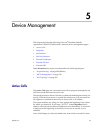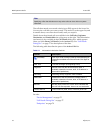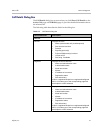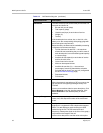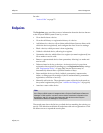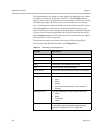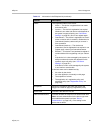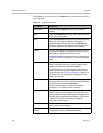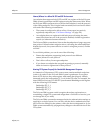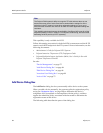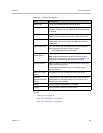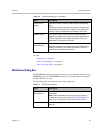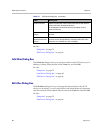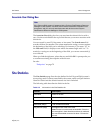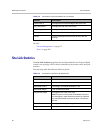
Endpoints Device Management
Polycom, Inc. 83
Names/Aliases in a Mixed H.323 and SIP Environment
An endpoint that supports both H.323 and SIP can register with the Polycom
DMA system’s gatekeeper and SIP registrar using the same name/alias. When
the Polycom DMA system receives a call for that endpoint, it uses the protocol
of the calling endpoint. This is logical and convenient, but it can lead to failed
calls under the following circumstances:
• The system is configured to allow calls to/from rogue (not actively
registered) endpoints (see “Call Server Settings” on page 221).
• An endpoint that was registered with both protocols (using the same
name/alias) later has one of the protocols disabled, and that registration
expires (or otherwise becomes inactive).
The Polycom DMA system doesn’t know that the endpoint no longer supports
that protocol. When another endpoint tries to call using the called endpoints’
disabled protocol, the system still tries to reach it using that protocol, and the
call fails.
To avoid this problem, you can do one of the following:
• Ensure that endpoints supporting both protocols use different
names/aliases for each protocol.
• Don’t allow calls to/from rogue endpoints.
• If you know an endpoint has stopped supporting a protocol, manually
delete its inactive registration for that protocol.
Naming ITP Systems Properly for Bandwidth Management Purposes
An Immersive Telepresence (ITP) room system contains multiple endpoints
(codecs). In order for the Polycom DMA system’s gatekeeper to recognize
these as ITP devices, they must register with names that properly identify
them and specify the total number (2, 3, or 4) in the ITP room. For example, the
three HDX devices in an OTX 300 ITP system named Bainbridge could register
with the following H.323 names:
Bainbridge ITP_3_1
Bainbridge ITP_3_2
Bainbridge ITP_3_3
The Polycom DMA system would recognize these three registrations as
constituting a single ITP system and assign them a Gold class of service (you
can change this if you wish).
The Polycom DMA system also manages the device authentication settings as
applying to a single system. You can only edit the device authentication and
class of service settings for the primary codec (the device designated as 1); the
DMA system automatically propagates any changes to the other devices in the
ITP system.



